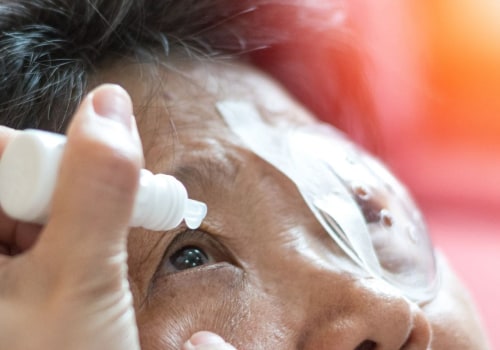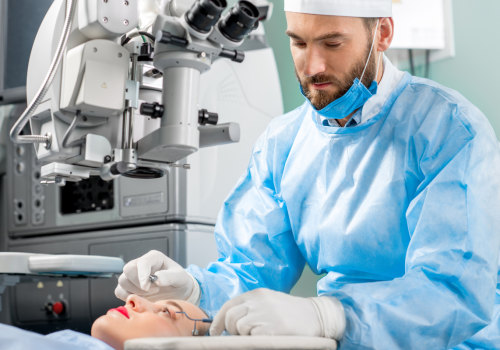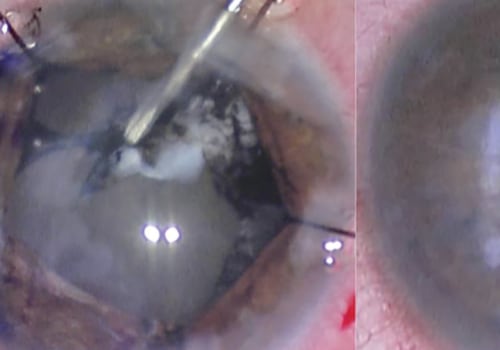Intracameral injection of cefazolin bolus (1 mg in 0.1 ml of solution) and also of 1 mg intracameral cefuroxime at the end of cataract surgery have been shown to reduce the rate of postoperative endophthalmitis without toxic effects on the cornea or retina. Subconjunctival antibiotics are commonly given after intraocular surgery. The reason for administering subconjunctival antibiotics at the end of the eye procedure is to inhibit the growth of bacteria that can enter the eye during the surgical procedure. Studies conducted to evaluate the effectiveness of prophylactic subconjunctival antibiotics in reducing the incidence of postoperative endophthalmitis have yielded conflicting results.
The administration of antibiotics in the irrigating fluid for cataract surgery has become a common technique for the prophylaxis of infections. This technique entails the risks of antibiotic toxicity, their cost and the possibility of the appearance of resistant bacteria. Postoperative endophthalmitis is rare, but has potentially blinding consequences. There is no consensus on prevention, but there are some controlled studies with methods to reduce the infection rate, such as the use of povidone iodine and intracameral antibiotics.
There is only one randomized controlled study (endophthalmitis vitrectomy study or EVS) left on the treatment of postoperative endophthalmitis, but there are retrospective studies that examine the timing and the various methods of vitrectomy and intravitreous antibiotics. Prospective randomized comparison of 3-day versus 1-hour preoperative prophylaxis with ofloxacin for cataract surgery. To date, the only measures demonstrated by scientific evidence to reduce the rate of endophthalmitis after cataract surgery are the preoperative use of povidone iodine and intracameral cefuroxime. Effectiveness and safety of an intracameral cefuroxime injection for the prevention of endophthalmitis after cataract surgery with or without perioperative capsule rupture.
The ESCRS study on the prophylaxis of endophthalmitis after cataract surgery8, a prospective and randomized clinical trial, evaluated the effects of an intracameral injection of 1 mg of cefuroxime at the end of surgery and of an intensive pulsed perioperative topical application of levofloxacin in a 2 x 2 factorial design. Risk of endophthalmitis after cataract surgery using different preoperative disinfection protocols with povidone iodine. Seven-year results of the use of intracamerular cefazolin as prophylaxis of endophthalmitis in cataract surgery. Topical povidone iodine, an antiseptic agent with broad-spectrum bactericidal activity, has become the standard treatment for preparing the ocular surface before cataract surgery (Figure); its use is supported by a prospective comparative (although not randomized) study2 and by extensive clinical and laboratory evidence.
Topical antibiotics were reported to be more effective in decreasing conjunctival bacterial colony counts when administered 2 hours before surgery rather than one or more days before surgery. Reevaluation of intracameral cefuroxime as prophylaxis against endophthalmitis after cataract surgery in India. The adoption of topical anesthesia for cataract surgery has made subconjunctival injection of antibiotics quite inconvenient. Comparison of the efficacy of irrigation with 1.0%, 5.0% and 10.0% povidone iodinated povidone combined with 0.3% topical levofloxacin as preoperative prophylaxis in cataract surgery.
The practice patterns of antibiotic prophylaxis for cataract surgery in India are the results of an online survey. .



